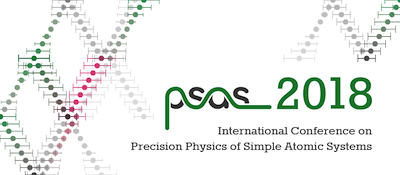Speaker
Description
Precision spectroscopy in few-body atomic systems, like hydrogen and helium, enables the testing of the quantum electrodynamics(QED) theory and determination of the fundamental physical constants, such as the Rydberg constant~\cite{2013H}, the proton charge radius~\cite{2009Biraben_HydrogenReview}, and the fine-structure constant~\cite{2010Pachucki,2017Zheng}. It also sets constraints on new physics beyond the standard Model(BSM). High-precision spectroscopy of atomic helium, combined with ongoing theoretical calculations for the point nucleus may allow an alternative determination of the helium nuclear charge radius, which could be more accurate than from the electron scattering. Moreover, the comparison of results from electronic and muonic helium will provide a sensitive test of universality in the electromagnetic interactions of leptons.
The $2^3S$-$2^3P$ transition of He is particularly suitable for this purpose, because it is relatively sensitive to the nuclear charge radius and can be calculated within the QED theory up to m$\alpha^7$ order. These calculations will bring the theoretical accuracy to the 10-kHz level and may allow the determination of the helium nuclear charge radius with an accuracy of $10^{-3}$.
Recently, We perform an laser spectroscopy measurement of the $2^3$S-$2^3$P transition of $^4He$ in an atomic beam. The configuration of the experimental setup is shown in Fig.1. The new centroid frequency of the $2^3$S-$2^3$P may lead to a determination of the nuclear charge radius of He($r_{He}$) with a relative accuracy of $10^{-3}$,once the theoretical calculations for m$\alpha^7$ corrections have been accomplished. This will enable a comparison of the $r_{He}$ values obtained from electronic and from muonic helium in the future. Such a comparison will help to resolve the proton charge radius puzzle, while in the case of disagreement with muonic determination it will open a window for new physics beyond the standard Model by violation of the lepton universality in electro-magnetic interactions.
\end{multicols}

